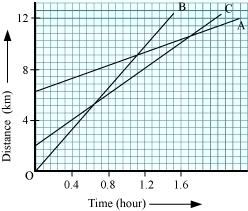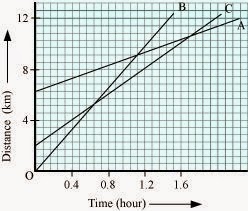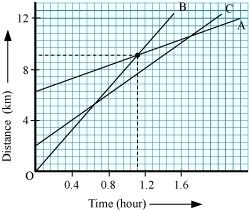
Fig 8.11 shows the distance-time graph of three objects A, B and C. Study the graph and answer the following questions:


![]()
![]()
Therefore, Speed = slope of the graph
Since slope of object B is greater than objects A and C, it is travelling the
fastest.
(b) All three objects A, B and C never meet at a single point. Thus, they were
never at the same point on road.
(c)

7 square box = 4 km
∴ 1 square box = 4/7 km
C is 4 blocks away from origin therefore initial distance of C from origin =
16/7 km
Distance of C from origin when B passes A = 8 km
Thus, Distance travelled by C when B passes A = 8 - 16/7 = (56 - 16)/7 = 40/7 =
5.714 km
(d)
Distance travelled by B by the time it passes C = 9 square boxes
9�4/7 = 36/7 = 5.143 km